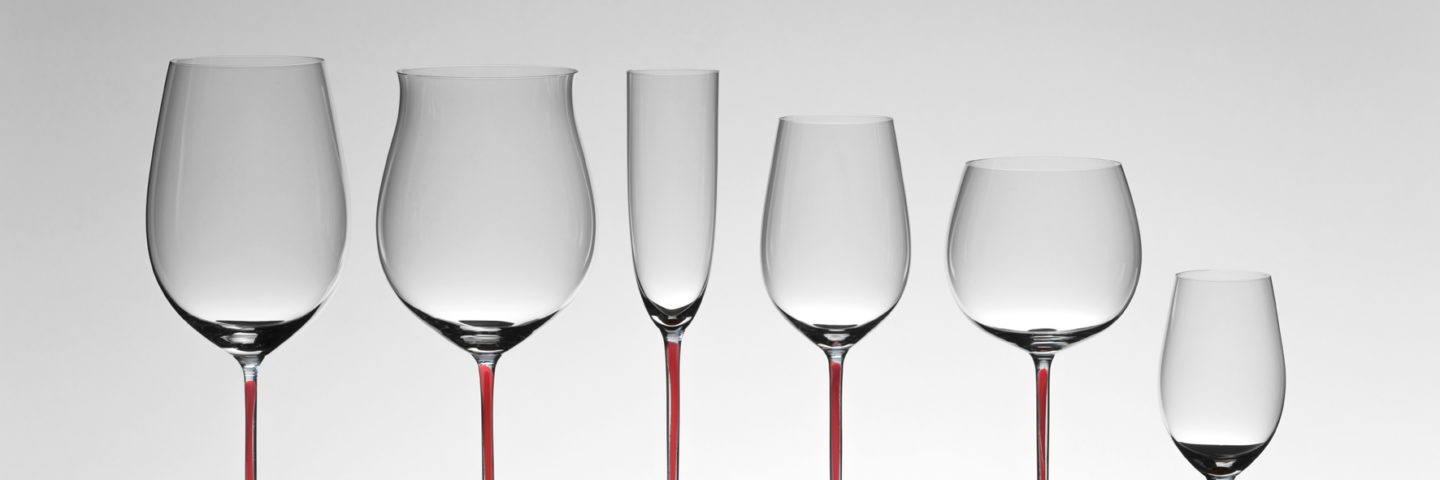[twitter style=”horizontal” float=”left”] [fbshare type=”button” width=”100″]
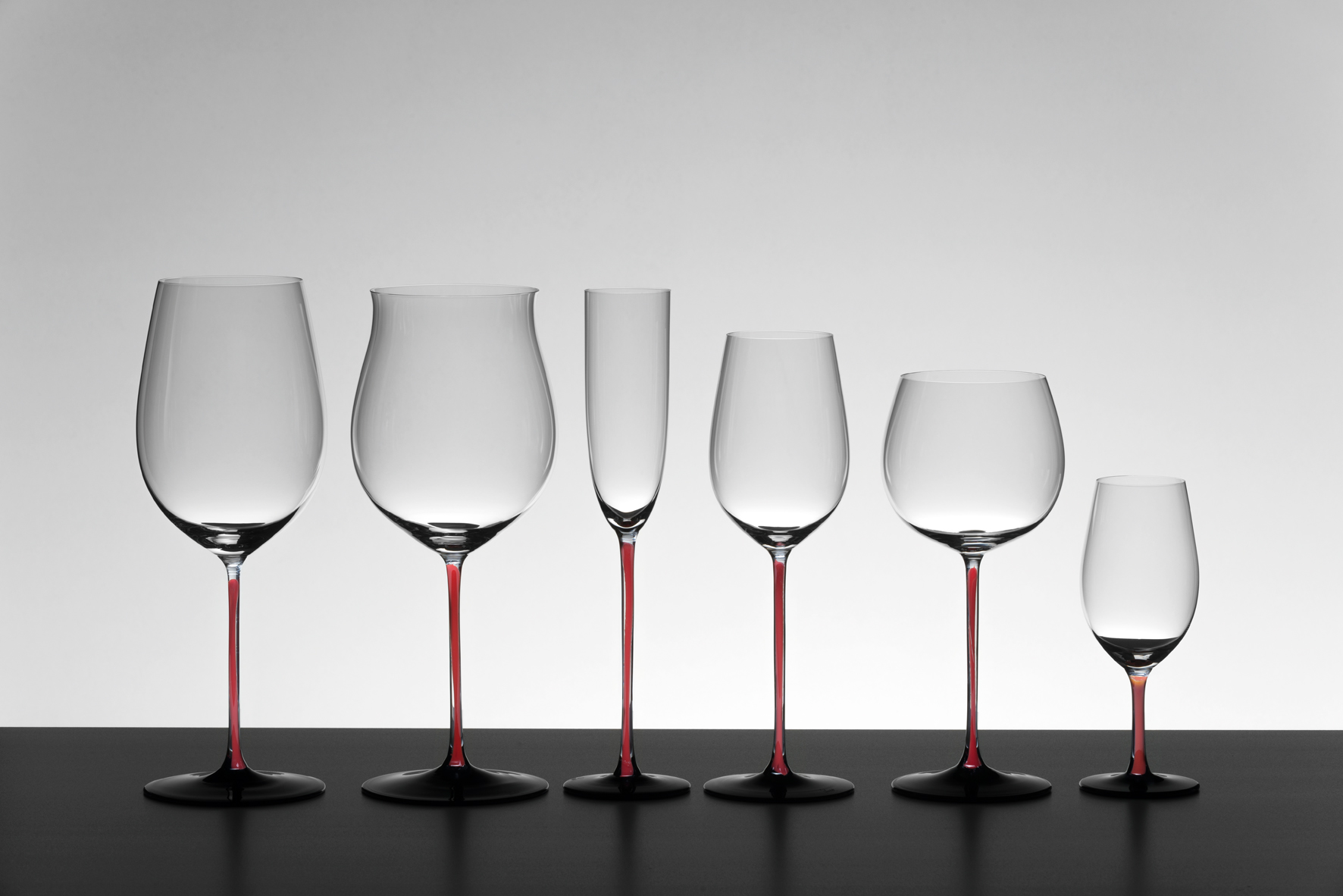
Kerstin Rodgers on picking the best glasses from which to drink your wines. WineTrust100 Master of Wine Nick Adams has added his own comments to Kerstin’s text – and added some suggestions for matching glasses to the wine below.
This month I’m not going to write about wine but the vessel, the Holy Grail even, that you will drink it from. If you are a wine connoisseur and spend a bit on a good bottle of wine, it is undeniably important to buy glasses that match up to the quality of the wine.
The quality and design of the glass can enhance the drinking experience: first the ‘nose’ then the taste will be optimised. Research has shown that it does matter what receptacle your food and drink arrive in. Colour, the material that the tableware is made from, the weight and the texture, all affect the perception of taste and enjoyment.
MW Nick Adams says: “Absolutely essential!”
In general, wine experts agree that big glasses are better than small; in this way the bouquet or smell of the wine has the equivalent of the Albert Hall to run around in. But don’t bother using an expensive glass for a cheap wine, there is only so much a good wine glass can achieve.
MW Nick Adams says: “Agree – this is especially important for big red wines”
Mouth blown or factory made:
The classier glasses are made by specialist glass blowers, whereas cheap glasses are made industrially, you can even see the seams.
MW Nick Adams says: “Although Riedel’s factory glasses are almost as good as their hand blown – and about 1/3 of the price.”
Stemware:
A glass is divided into the ‘bowl’, the ‘stem’ and the ‘foot’.
Posh glasses have stems which differ according to the style of drink. Hold glasses by the stem when you are drinking, so that the natural body heat of your hand does not warm up the bowl of the glass. A good glass will also be easier to swirl, to check the ‘legs’ on the wine, for viscosity and sugar content. Although I tend to swirl a glass with the bottom placed upon a table, as if guiding an ouija board puck; I’m not expert enough to swirl mid-air without slurping some out of the glass!
MW Nick Adams says: “Please do hold the wine glass by the stem to enjoy your wine. By holding by the stem you:
- Get to see the colour properly – both the core of the wine and the rim
- You don’t warm it up with your own hand body heat
- You are actually less likely to knock it over!”
Weight and feel:
Professor Charles Spence from Oxford University, who studies the psychological effects that the receptacle can have on food and drink, has said that the heavier the glass or the bottle, the better the taste of the drink. “The psychological effect means it tastes significantly better.”
MW Nick Adams says: “I disagree with this – a heavy wine glass is clumsy and makes the wine feel cheap.”
Many of the posher wine glasses however are extremely light-weight. Liscio glasses, for instance, weigh around 90 grams each. The glass has a silky feel.
Rims:
A good quality glass will have thin rims rather than thick fire-polished rims which have a bulge at the edge, like pub glasses. The latter are often used in catering but expensive glassware rims are ground flat giving them a nicer mouthfeel.
MW Nick Adams says: “Very good point: I hate rims which are so thick that you feel you could bite on them.”
Care:
If using expensive glasses, you can use a dishwasher but hand washing is recommended: use hot soapy water, rinse and dry on a rack. Gently polish with a soft non-grippy micro fibre cloth or a clean linen towel before service, holding the bowl rather than the stem or the foot. Proprietory round-headed washing up brushes like Eddingtons Bottle and Glass Brush Cleaner are recommended.
MW Nick Adams says: “You have to accept that you will sooner or later break some, but always hand wash and really make sure no washer residue is left (and you don’t dry them with a dirty towel). This is especially important for sparkling wine glasses where any dish washer or linen cloth residue will kill the bubbles.”
Think also about your dishwasher and the height of your shelves. Long stem glasses should be washed by hand.
I keep my wine glasses on special glass racks which I search out at vintage fleamarket sales when I visit France.
According to drinks expert Victoria Moore, it’s best to wash up wine glasses in the morning, not when you’ve had a drink, for most glasses are broken during the washing up stage of the evening.
MW Nick Adams says: “But do rinse them out!”
Good brands of wine glass:
Zalto glassware was recommended to me by the Italian food writer Dino Joannides. In their literature they mention that “The curve of the bowls are tilted at the angles of 24°, 48° and 72°, which are in accordance to the tilt angles of the Earth”.
Lead crystal glasses aren’t actually made of crystal, the name derives from the Venetian term ‘cristallo’, but have density, brilliance and clarity and also make a distinctive ringing sound when tapped. Charles Spence, professor of experimental psychology at Oxford University, says “The sound of the food matters” I imagine this equally applies to drink.
Famous crystal glass manufacturers include:
Riedel, this Austrian firm is probably the leading manufacturer of quality wine glasses in the world. Riedel himself suggests you spend the same amount per glass that you would on the bottle of wine.
Zwiesel, Hungarian manufacturer
Liscio from Slovakia
Baccarat, French manufacturer
Dartingdon, the only UK manufacturer
Waterford, the only Irish manufacturer
A cheaper version of the historical style of glass can be found at the French company La Rochère. I once drove eight hours out of my way to visit their factory shop in the Alsace-Lorraine. There I bought modern versions of Napoleonic glassware. It’s sturdy, well priced and doesn’t easily break when washing up.
Duralex is also a famous French glass company, but of a more prosaic practical nature. The ‘Picardie’ style is a modern classic, made of toughened glass and with a number pressed into the bottom. French schoolchildren say if you get the same number as your age, it’s a lucky omen. You will find these glasses used for table wine for every day meals.
Guide to the correct glass for the right wine:
Our wine expert Nick Adams MW has about five main shapes and sizes of wine glass at home, for sparkling, dry white, Burgundy, dessert wine or whisky. He says: “If I had to pick one glass that does the trick for most wines it would Riedel ‘Sangiovese’ model. My favourite though is probably the Pinot Noir/Burgundy ‘bowl’ shaped glass”.
Wine experts tend to use the standardised ISO tasting glass, a large tulip on a short stem, for sampling wines at large tastings, this also works for sherry and port.
Champagne:
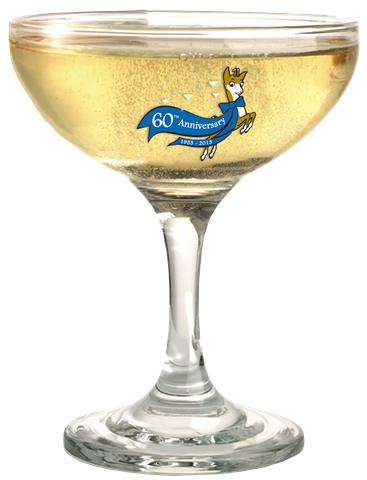
Flutes, tulips or coupes? I have to profess a liking for a Babycham glass, the prettiness of a breast-shaped vessel from which to drink my champers. But officially, this is not a good idea. Champagne houses recommend that we drink from a flute, the bubble do not dissipate as quickly.
MW Nick Adams says: “But if the Champagne is old/mature I would recommend drinking out of a white wine glass.”
White wine:
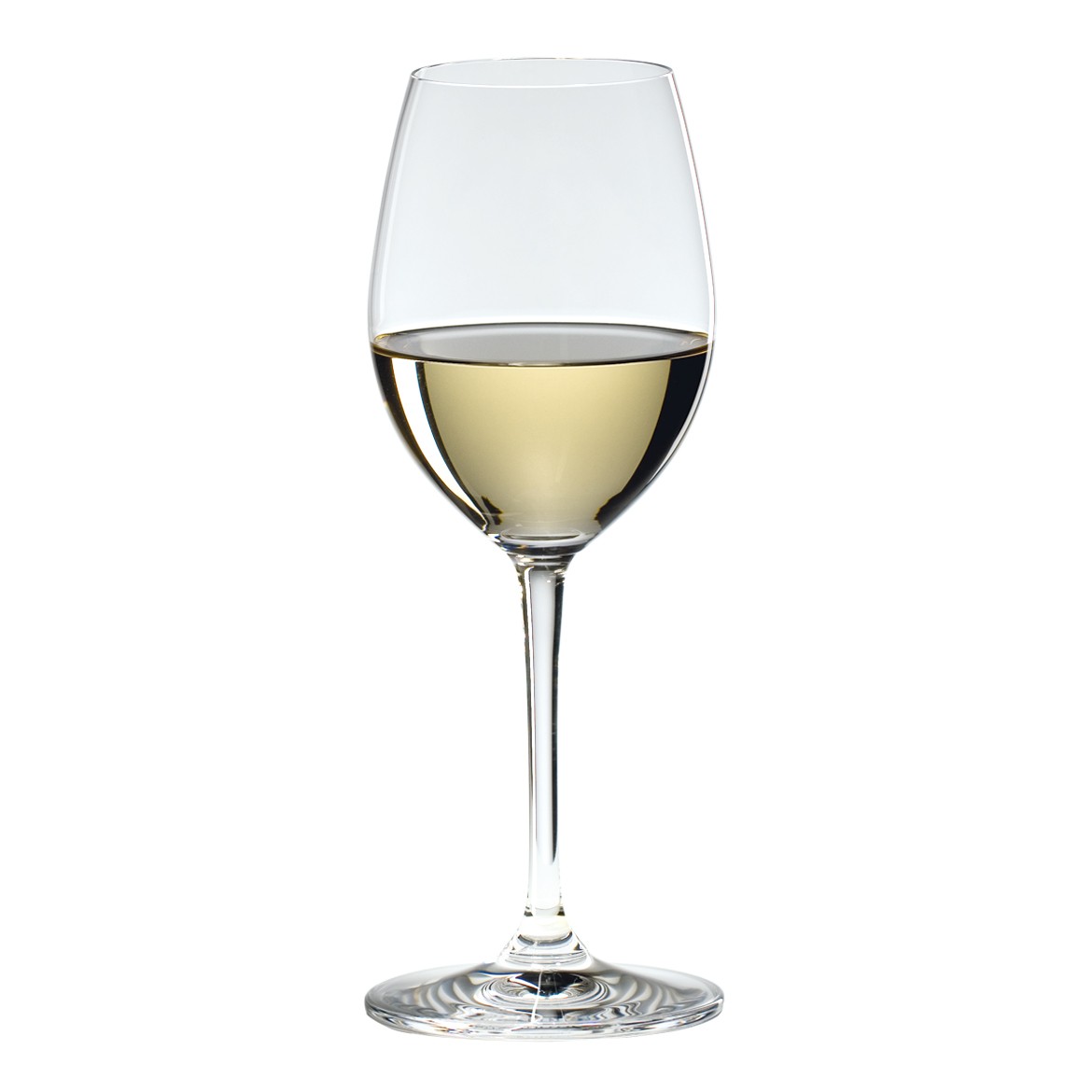
Starter glass: a white wine glass tends to be smaller than a red wine glass. If wanting to get a bit more fancy, buy a set of traditional green-stemmed glasses for Alsacian or German wines. Why were they green? The glass was made from potash and sand from the forests common in that region, and so was called ‘forest glass’.
Red wine:
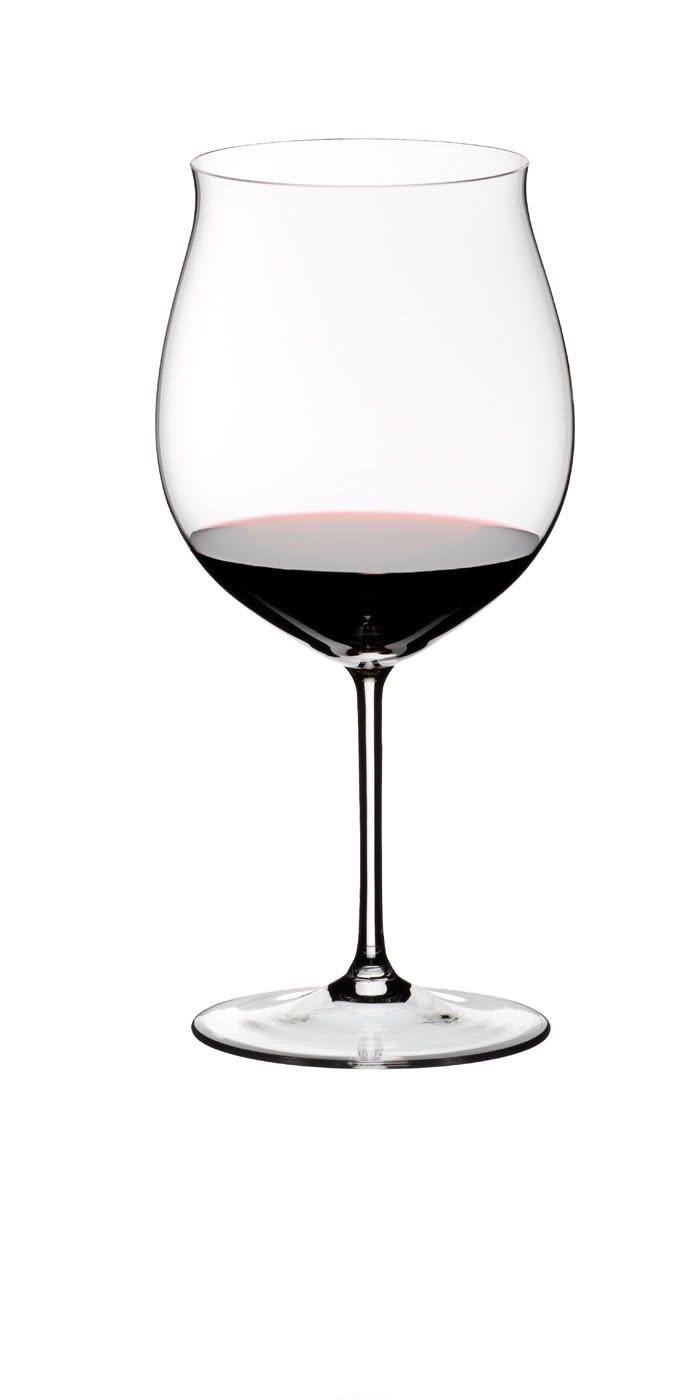
Starter glass: red wine glasses have more ‘head’ room than white wine glasses, the better to enjoy the smell. Buy an elongated bowl glass with stem, a Cabernet Sauvignon/Merlot glass.
If a child was asked to draw a wine glass, the simple bowl shape of The Paris goblet would likely be the result. However experts says this is one of the worst shapes of glass to drink from. It’s claimed that certain shaped glasses reduce the tannins of red wine.
If you want to increase your collection, try the roomy Rioja glass, so large you could fit a bottle in. It is great for poking your nose, perhaps half your face, inside, to really grab a lungful of odour. The bottom of the bowl is tapered, with an almost triangular shape, this all helps direct the smell upwards.
Sweet wines:
Small glasses are used for sweet or dessert wines, as we drink a smaller quantity. A good dessert wine such as Sauternes will use a smaller version of a standard wine glass. Sherry is often drunk from a glass with a bowl that tapers narrowly to the stem. Port is drunk from a smaller version of a classic white wine glass. Madeira is drunk from a goblet shaped small glass.
Black glass test:
Wine experts including Master of Wines have fallen prey repeatedly to the ‘black glass test’ devised originally by University of California at Davis in the 1980s. Here is a recent example. Wines, red, white, rose, champagne are placed at the same temperature in a black glass and wine connoisseurs are asked to describe the wine. Many can’t even taste the difference between red and white wine. Calvin Trillin, the food writer, says that the trick is to take three sips, and the drying qualities of red wine will become evident.
So do you think the shape and quality of your glass is important to your wine enjoyment?
Do you spend a great deal on posh glassware or are you happy with a job lot from IKEA? Do you prefer a stem or a goblet or beaker?
FOOTNOTE: WineTrust100 MW Nick Adams on his suggestions for glasses from which to drink WineTrust100 wine:
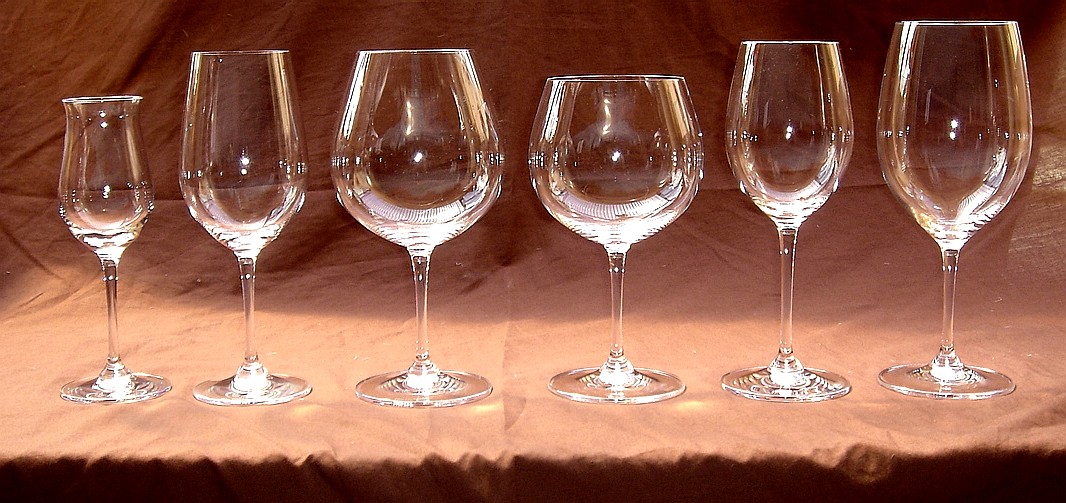
For me, the lovely set of mixed shapes above will cover all needs. So, from left to right:
- Fine for dessert wine, sherry, port and Madeira – eg Muscat de Rivesaltes Domaine Cazes, Valdespino Innocente Fino, Fonseca LBV 2005, Henriques & Henriques Malvasia
- Perfect for Fontodi’s Chianti Classico 2011
- Ideal for Beaune Bastion I’er Cru 2009 or the new Vosne-Romanée Domaine Fraçois Coufuron-Gindre 2011, or a mature oaked Chardonnay and the Sequillo white
- Would work well with any New World Pinot Noir – eg Lawson’s Dry Hills Black Label 2011, or the Rioja Reserva Viña del Oja 2004
- Very good for any aromatic, unoaked white – such Amalaya Torrontés|Riesling 2014 or Paul Cluver Gewürztraminer 2013 (+ any Sauvignon Blanc, Viognier etc.)
- The best for any big reds from the list – eg The Entity Shiraz, Bordeaux and Rhône
[twitter style=”horizontal” float=”left”] [fbshare type=”button” width=”100″]

